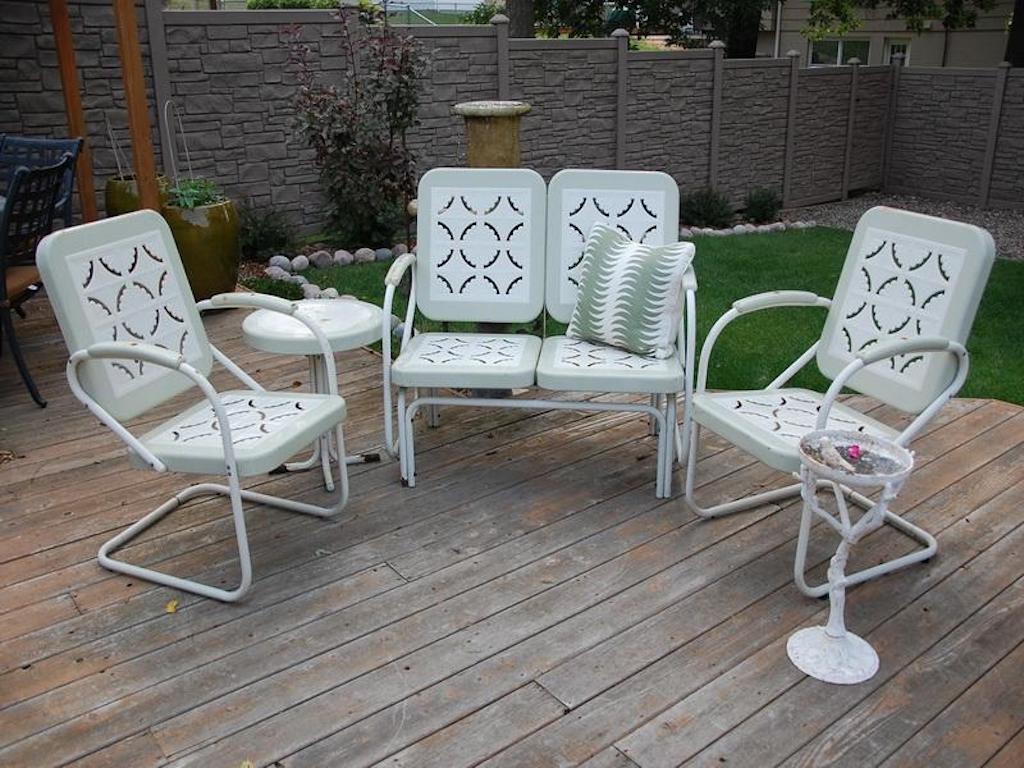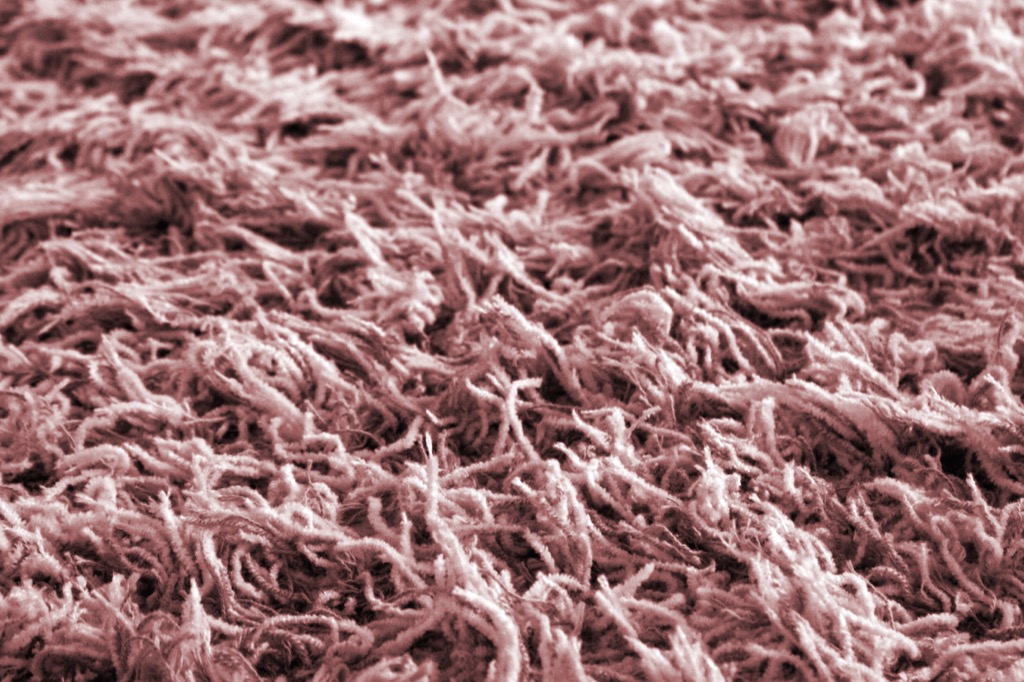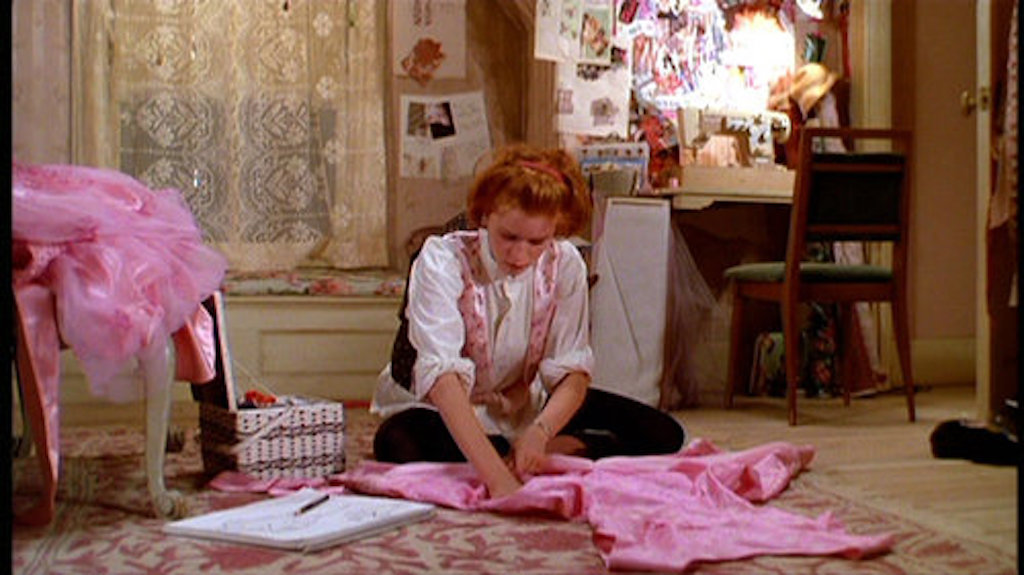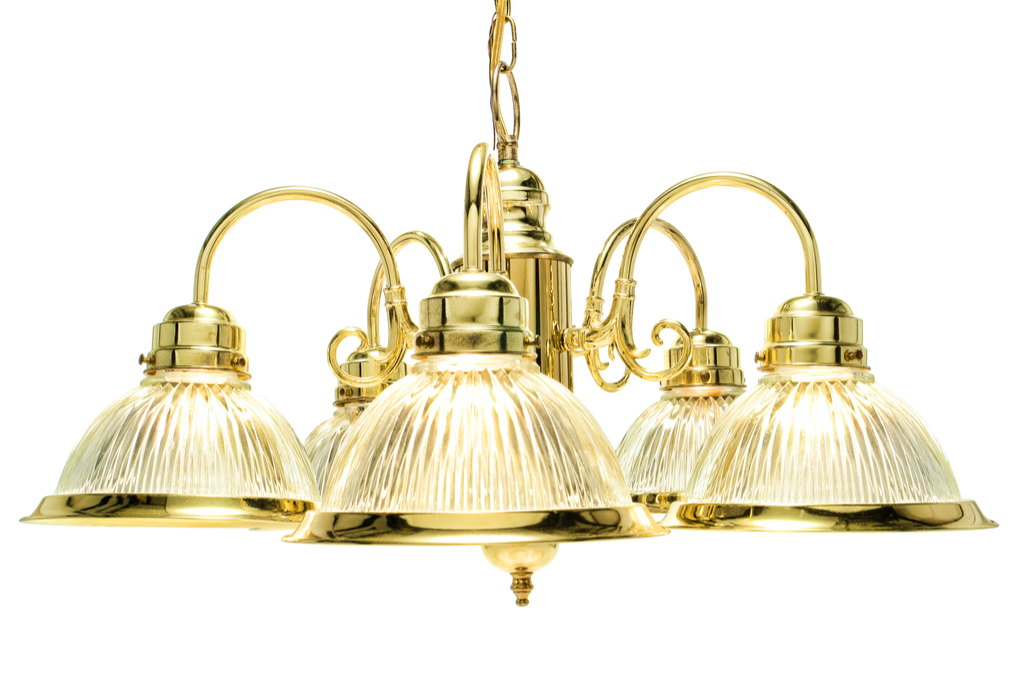The Worst Home Decorating Trend the Year You Were Born

Beauty, as the old saying goes, is in the eye of the beholder. But when you look back at many of the home design trends that were en vogue through much of the latter half of the 20th century, you’ve got to wonder what exactly our definition of “beautiful” actually was. (Furry toilet seats, anyone?)
In order to further shed light the worst interior design trends of the previous decades, we’ve pored over various “worst of” lists from Architectural Digest, Elle Decor, House Beautiful, Apartment Therapy, and all manner of fashion and design blogs, along with a recent survey conducted by Samsung that profiled the most hated design trends of all time. (Yes, furry toilet seat covers topped the results.)
So, without further ado, these are the worst home decorating trends from every year—according to the experts. And for another look at the worst art to come out of the 20th century, check out The Worst Movie Released the Year You Were Born.
1950: The Pink Attack
Due to the dull, depressing flat colors of the World War II era, those entering the new decade wanted to bring a colorful vibrancy to their lives—and to their homes.
Throughout the 1950s, according to Vogue, pink provided a way for femininity to make it into the mainstream—especially after women proved themselves to be such an uplifting force during the war. This attack of pink, while without a doubt almost painful to take in with the naked eye, became the way for the color to become acceptable for both men and women. And for more décor mishaps, check out these 30 Home Appliances So Bad They’re Hilarious.
1951: Red bunting
Along with the color explosion in the beginning of the decade, came the use of red bunting—appearing in nearly every kitchen (that wasn’t already painted pink). Perhaps the biggest push into bunting was by the most popular show at the time, I Love Lucy, whose titular character prominently featured her own bunted curtains throughout the kitchen.
1952: Formica and vinyl dining tables
No matter what angle you view them from, Formica and vinyl dining tables look, to put it bluntly, cheap. Though Formica was invented in 1912 by Daniel J. O’Conor and Herbert A. Faber, it didn’t grow in popularity until the 1950s, when space-age themes and atomic trends began to take off.
The space-age theme, coupled with the resurgence of Scandinavian design, focusing on clean, simple lines, made these ugly dining room sets a no-brainer in the early 1950s, according to vintage furniture distributor, Vintage Virtue. And for more home design trivia, check out these 25 Celebrities Who Live in Surprisingly Modest Homes.
1953: Red vinyl
Walk into any ’50s-themed diner (or a Johnny Rockets), and you’ll be instantly transported to a red-vinyl-laden past. It was so popular at the time that, according to Chieftain Fabrics, even the United Nations in New York City was so attracted to this design trend that they outfitted every main office in these vinyl chairs. So, you’d be forgiven for feeling a certain nostalgic comfort perched on a red vinyl chair at our favorite diner. That said, actually owning a set of red vinyl furniture and incorporating it into any design theme today is a task best reserved for the thin pantheon of interior designers who can pull off the fabric.
1954: Pink bathrooms
As it turns, the pink trend didn’t miss a beat in the bathroom—in fact, this is actually where the trend became the most prominent. The trend became so popular, that, according to according to Pam Kueber of Retro Renovation and Save the Pink Bathrooms, approximately 5 million out of the 20 million homes built between 1946 and 1966 had at least one pink bathroom. Further, the trend made it all the way to the White House, where the First Lady, Mamie Eisenhower, redecorated the White House bathroom to reflect many shades of pink in 1953, according to Country Living magazine. And for a detour into the grandest homes in the world, take a look at The Biggest Homes on the Planet.
1955: “Pea soup” color
Yes, this incredibly dated trend dates back to the 1950s, leaving a lasting imprint of a decade of midcentury Scandinavian-influenced color schemes—like this one pictured above.
1956: Rococo Revival

The Rococo Revival style—which sought to create an aura of opulence and luxury with art, furniture, and home decor—first emerged in France in the 19th century. During the latter part of the 1950s, this form of opulence was revived by American Rococo furniture trends like Naturalistic and Renaissance Revival.
1957: Yellow—everywhere
Though this particular shade of yellow was a touch more vibrant than the typical pale hue in fashion during the 1950s, this again spoke of the vibrant color schemes of the decade. Despite this color being the optimal choice for kitchen cabinets in the 1950s, we simply couldn’t imagine evoking the same bold strokes decades later.
1958: Metal patio sets

Similar to the pared-down furniture sets found in midcentury dining rooms, flimsy, minimalist metal patio sets were typical of Scandinavian design, where less is considered more. However, this trend has been largely reversed in the more recent decades, according to Architect Magazine. Nowadays, most homebuyers try to make the most of an outdoor space, in contrast to the 1950s, where designing a great interior took precedence.
1959: Ditsy florals
According to Apartment Therapy, the ditsy floral pattern began to grow in popularity beginning at the turn of the decade, and carried into the 1960s. In fact, this floral statement would serve as an indicator of the power of the flower, so to speak, in interior design trends of the 1960s. Let’s just say we’re glad it didn’t have much staying power.
1960: Bad linoleum flooring
Though linoleum flooring was invented in 1860, according to Cooper Hewitt Smithsonian Design Museum, it was most popular from the 1930s through the 1960s. While the more muted tones of previous decades don’t lend themselves to any particularly spirited criticism, the brightly colored linoleum flooring from the 1960s garnered many exclamations of disgust—mostly because these vibrant colors are no longer in fashion. In fact, bright linoleum tiles, like in the shot above, aren’t even available for purchase anymore—perhaps to avoid reverting back to a trend that should never have existed in the first place.
1961: TV trays

Almost a decade after Swanson introduced the first TV dinner, TV trays were a common design staple in most American households. According to the National Museum of American History, by 1960, 90 percent of American households owned a television, meaning that the TV tray was an essential part of the American existence, allowing Americans to watch their favorite shows and eat a hearty meal at the same time. Though that is the American dream (food and television), it’s safe to say the stylized Netflix shows and Pinterest-worthy meals of today are far, far superior.
1962: Hand chair
Mexican artist Pedro Friedeberg created this quintessential piece of furniture in 1962, having no idea that his creation would become incredibly popular in the coming years—and decades. Despite being one of the most popular pieces of design to come out of the decade, Friedeberg is quick to voice his disdain for the creation: “I hate them. They’ve become like an icon or something,” he told Architectural Digest. Fortunately, many critics agree with him.
1963: Striped couches
According to the interiors blog Design + Deliver, striped couches were just one symptom of an era obsessed with bold patterns and dramatic color schemes. While no experts are exactly sure where the striped couch came from, they can agree on one thing: that it should never come back into style.
1964: String art
String art, incredibly popular in the mid-’60s, was a testament to the arts and crafts movement also taking place in the design world during that decade, says Connox Magazine. String art, like the lamp pictured above, ended up being the most hated example of this movement, with other staples like studio glass, ceramics, and hand-woven rugs standing the test of time.
1965: Influx of gadgets
During the height of the Space Race, an emphasis on otherworldly design and “gadgets” dominated the interior design world. Four years before man finally landed on the moon, homeowners wanted their own feel for the future, investing in futuristic-looking materials that often only came off looking cheap or incredibly fake, according to Complex.
1966:Circular showers

If you enjoy clouding your relaxation time with a fresh dose of claustrophobia, then the circular shower would have been the perfect design trend for you. Though they have been around since the early 20th-century, the circular shower witnessed a resurgence in popularity during the 1960s, when designers were rebelling against previous standards of uniformity.
1967: Animal print
This trend can be mostly attributed to the premiere of The Graduate in 1967, when Mrs. Robinson, played by Anne Bancroft, draped in animal print, did her best seduce every man in her path (mostly successfully). According to Vogue, this one fashion statement led to the reincarnation of this print, filling homes and closets with mounds of animal prints of every variety—though, to be honest, many critics find that it only added to the chaos of the 1960s design palette.
1968: Orange and yellow cabinets
Beginning the transition into the more bold prints of the 1970s, printed cabinets like these began appearing more and more in homes across the United States. This design element blended the popularity of geometric patterns in the 1960s, with the more rich color schemes of the 1970s. And, in retrospect, this combination is one that should never, ever happen again.
1969: Tie-dye furniture
Just two years after the debut of their first album, The Grateful Dead brought an entirely new trend to the table—tie-dye. As this decade came to a close, tie-dye furniture became less counter-culture and more home-friendly, with pieces of furniture, like the one pictured above, offered at a much greater frequency. In fact, Up Tied, one of the foremost creators of this fabric, won a COTY award for their work in this craft in 1970.
1970: Avocado bathrooms
According to the Samsung survey, avocado bathrooms are one of the most hated design trends of all time. Similar to the pink bathroom trend, this one dominated households all across the world, with many of them, like the one pictured above, going a step further with avocado carpeting to match.
1971: Wood paneling

Though wood paneling has been part of the design world since the 15th-century, it witnessed a resurgence during the latter part of the 1960s and throughout most of the 70s. It was also incredibly popular because of its affordability. And, though it is considered to be one of the worst design trends of the decade, it’s coming back with a vengeance—yet again.
1972: Shag carpeting

Greatly influenced by the popularity of The Brady Bunch and their luxurious shag carpets stretching across their home, this decorating trend appeared in nearly every home in the country, says Architectural Digest. Following in the path of the previous decade, these carpets often came in a variety of bright colors, and more often than not, shades that weren’t exactly stain-friendly.
1973: Fuzzy toilet seat covers
Even today, fuzzy toilet seat covers are still popular among the older generation, most likely because they’re attempting to relive a previous era of carpeted bathroom glory. While it’s unknown who created these spectacularly-plush devices, it’s undeniable that they create a cozy, albeit ugly, atmosphere.
1974: Artex walls and ceilings

This surface coating used for interior decorating differs from plaster, as it is intended to create a more textured finish. Though, unfortunately for those partaking in this popular design trend in the ’70s and ’80s, it was made with white asbestos, contributing to the end of this fad very quickly after its harmful effects were discovered.
1975: Carpeted walls
Though actress Jayne Mansfield seemed to enjoy her carpeted bathroom (pictured above), we can only imagine how many vacuums she had to go through in order to maintain the vibrancy of those pink carpeted walls. According to David Heathcote, author of The 70s House, homes during this decade were especially revolutionary for their different use of textiles and open-floor spaces.
1976: Beaded curtains

According to the New York Times, the use of beaded curtains exploded during the latter part of the ’70s, mostly due to the premiere of The Mary Tyler Moore Show, in which one of the characters blocked the sunlight coming into her room through a string of beads. Inevitably, these beaded curtains, which could be used in a window or doorway, became a part of the hippie design scheme, still appearing in the kind of stores that sell movie posters and incense. Decades later, the Samsung survey found that the vast majority of people detest this invention.
1977: Indoor wicker furniture
As many critics vehemently proclaim, this wicker furniture trend would have fared better where it belonged—outdoors. Even the incredibly popular peacock chair (pictured above), fit into the “back to earth” trend of the latter part of the 1970s, where more natural accessories began to gain steam. As it turns out, this was only the beginning of the outdoor-to-indoor furniture trend.
1978: Plaid wallpaper
As Elle Decor points out, plaid is only acceptable in extremely small doses—unlike the overwhelming kaleidoscope of plaid that seemed to be the popular wallpaper trend going into the next decade.
1979: Wooden TV cabinets

According to Interior Furniture Resources, the 1970s were all about “making do”—meaning that designers created furniture with a certain amount of functionality involved. At this point of the decade, televisions were getting bigger, and therefore, so were the cabinets where they were being stored. So, in order to make this most of this excavation of space, designers began creating storage space on all sides of the television, resulting in this functional, yet incredibly ugly, trend.
1980: Rag-rolled walls
In the beginning part of the 1980s, certain painting techniques like rag-rolling replaced the maximalist wallpaper trends of the previous decades—though to say they were more minimalist would be incorrect. More than anything, according to Ideal Home, this technique was used to cover up imperfections on the walls beneath the paint. Eventually, though, this method became more of a trend and less of an art form to hide your home’s imperfections.
1981: Carpeted bathrooms
Frankly, this might be the worst trend of the whole 20th century. Pictured above, this 1981 bathroom from the Better Homes and Gardens New Decorating Book combines multiple past design faux pas from the previous decades, with shag carpeting covering every inch of the floor, leading into a sunken bathtub. According to Nancy Mitchell at Apartment Therapy, this trend didn’t last very long, as the carpet eventually succumbed to mildew.
1982: Vertical blinds

Though vertical blinds were first believed to be better at disrupting the light filtering through your windows, they quickly turned into much more of a practical obsession, and more of a design trend beginning in the early 1980s, according to HGTV. Additionally, they were easier to clean, as the dust had no way to settle on their every corner, as opposed to the more conventional horizontal blinds. But alas, no matter how practical they were, voters in the Samsung survey overwhelmingly detested them—and we can’t blame them for that.
1983: Country floral bedspreads
Unsurprisingly, this combination of massive floral patterns, pastels, and frilly details is no longer a crowd-pleaser. Though, if you take it from Architectural Digest, this country design, paired with a white enamel bed frame, stuck around until the early 1990s, then draped over canopy beds.
1984: Glass block walls

Beginning in the 1930s, many architects like Chicago-based Andrew Rebori, began incorporating glass block features into their buildings—and ultimately inspired the 1980s revival, which ten filled thousands of homes across the country. According to Architectural Digest, these walls were most popular in the bathroom, though eventually found their way into different parts of the home. Decades later, they’re one of the most cringe-worthy design trends of the 1980s—and that’s saying a lot.
1985: Harvest gold appliances

Not only did designers in the mid-1980s witness a resurgence of wooden accents, they paired them with the color harvest gold and plastered the concoction on appliances. Thankfully, the trend only lasted for a few years, but eventually gave way to the darker, more gloomy colors of the ’90s.
1986: Grandmother curtains

Not only did Molly Ringwald inspire a decade of “grandmother chic” with the 1986 debut of Pretty in Pink, but she also brought this lacy, feminine, and vintage-inspired look to the interior design world. And, while we appreciate this transition from shoulder pads to lace, the invention of “grandmother curtains,” says Lonny Magazine, is a trend to never be repeated.
1987: Laura Ashley florals

During the peak of the 1980s floral movement, no other name brand was more desirable than Laura Ashley. At that point in the 1980s, there were over 200 Laura Ashley outlets. (These days, there are none in America.) Now, HGTV compares this bedding style to “living in a life-sized version of Barbie’s Dream House.”
1988: Floral chintz furniture
At the close of this decade, florals were still just as powerful, appearing in one of the biggest trends of those years—floral chintz furniture. Since George Washington decided to outfit his estate, Mount Vernon, in “chintz paper,” this trend has made multiple appearances throughout the years, but especially in the 1980s—otherwise known as the era of “more is more.” This print was so overdone, in fact, that the Prince of Chintz himself, iconic designer Mario Buatta, admitted to Vogue: “Chintz was overdone in the ‘80s.”
1989: Ugly pastels

We’d be remiss if we didn’t include this interior design trend, one of the few with the distinct honor of transporting most of us into another time. According to House Beautiful, this trend began in 1983 with more muted colors, then eventually followed the fashion world by incorporating more vibrant, watercolor pastels that became a cultural icon of the era.
1990: Taxidermy

Voted as the second most hated interior design trend by the Samsung survey, taxidermy, the practice of preserving an animal’s body via mounting or stuffing, became a popular decorating staple in the early 1990s. Since the Middle Ages, this practice has maintained a mild popularity. However, it experienced an incredible revival in the 1990s due to artists like Damien Hirst, who often experimented with preserving various animals, says Elle.
1991: Incredibly frilly bedding

Continuing the “more is more” trend of the 1980s, frilly bedding and bedroom accents were all the rage, though, according to Lonny, this vintage-inspired trend will have no place in future design schemes.
1992: Fake flowers

Following in the decorative footsteps of the fern movement in the 1980s, homeowners looked to plants (this time, of the fake variety) to bring more light and color into a space. While fake flowers have been made to look a bit more realistic in recent years, the ones offered during this time can be compared to those available in the craft section of Walmart.
1993: Heavy drapery

In the early ’90s, only those curtains with enough fabric to completely obscure the outside world were acceptable to outfit your house in. Decades later, we’re more obsessed with letting the natural light flood in, rather than hiding from it at every chance we get.
1994: Mix and match style

With the 1994 premiere of Monica Gellar’s incredibly famous (and wildly unrealistic) apartment, the show, Friends, made this mix and match interior design trend a 90s phenomenon. In fact, as shown by House Beautiful, the Friends apartment captured some of the most important interior design aspects of the ’90s—including the open shelving, copper accents, and yes, the beloved purple walls. And, though we all still pine after Monica’s apartment (mostly in a nostalgic sense), the mix-and-match trend is now considered to be one of the most hated fads, as displayed by the Samsung survey.
1995: Decorative border wallpaper

While, according to Elle, many other retro wallpaper trends are coming back into style (like these ’60s-inspired geometric-patterned prints), decorative border wallpaper (including ivy stenciling) is one to be left in the past.
1996: Brass and gold-colored fixtures

According to realtor.com, brass was the most popular alloy of the 1990s, appearing in light fixtures, bathroom knobs, and a variety of other home accessories. Fortunately, homeowners have steered clear of this trend in more recent years, as brass fixtures were notorious for looking cheap because they had the tendency to chip.
1997: French country toile
Similar to the chintz reincarnation, this French-inspired bedding trend aimed to bring a tone of sophistication to the home, but, according to Lonny, remains a rather uninspired bedroom statement.
1998: Inflatable chair
Inflatable chairs were so popular during the latter part of the 1990s that the princess of pop, Britney Spears, enjoyed lounging around on them occasionally. I will say, as a young person in the ’90s, this chair was the ultimate must-have accessory—and while this sentiment has been echoed time and again, it doesn’t counteract the fact that this invention is incredibly uncomfortable and cheap. Despite being one of the most popular interior design trends of the ’90s, many critics are more in tune with its failures as an invention.
1999: Hunter green walls
Closing out one of the worst decades for home interior design, hunter green walls first appeared as the in vogue color in the late 1980s, but grew in popularity a decade later when it was featured in an Eclectic Style Interior Design magazine spread, published in 1998. Now, the color is avoided at all costs–at least when it comes to home decor.
2000: Red and yellow floral fabrics
In 2000, the red and yellow floral pattern, lined with frills, made its way on to nearly every throw pillow, comforter, and curtain in the United States. This is just one of many floral patterns that Lonny has put on the interior design blacklist. And for more ways to learn from these trend mistakes and craft your own interior design statement, check out these 40 Home Upgrades You Should Have by Age 40.
To discover more amazing secrets about living your best life, click here to sign up for our FREE daily newsletter!